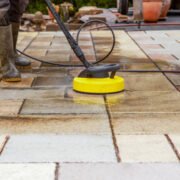Are you thinking about buying a bonsai tree? If so, then you should note the tips for taking care of a bonsai you need to remember before bringing one home.
After all, if you don’t have the time to properly care for it and have it thrive, it may not be worth the purchase at all. When you buy a bonsai, there’s no turning back, as it becomes your responsibility to ensure it lives a long and happy life.
If you are interested in knowing what you need to do to care for your bonsai tree, then read on to educate yourself!
1. Fertilizing and Watering
Fertilizing and watering are two of the most important steps to take care of a bonsai tree. It is essential to use a balanced fertilizer that is specifically designed for bonsai plants. You should fertilize every two weeks, making sure to water the roots afterward to help absorb the fertilizer.
To water correctly, use a watering can with a nozzle that has little holes to spread the water evenly. Try to water until some runs out of the bottom. When the soil becomes dry, water again.
When the weather is hot, water more often to ensure the tree is hydrated and getting enough water. Lastly, don’t forget to pay attention to the humidity levels in the area you place the bonsai. High humidity is especially important, so mist the leaves from time to time to maintain their proper moisture level.
2. Pruning and Maintaining Bonsai Shape
Pruning and maintaining a bonsai tree is essential to keeping it healthy and aesthetically pleasing. Pruning should be done often, taking special care to remove unhealthy branches and twigs. When pruning a bonsai, keep the original shape in mind, and use thick pruning shears.
If a branch is bent or twisted, use wire to form it into its original shape. It is important to prune in stages throughout the life of the tree to maintain the desired shape. It is also helpful to keep a healthy soil mix, avoiding highly dense soils, which can prevent proper drainage.
3. Transplanting and Potting
Before repotting, it is very important that the tree is in a healthy and stable condition; it is also important to begin the transplanting process by removing the old soil. Bonsai pots should have adequate drainage holes, and the soil should be replaced with a special bonsai soil mix. It is advised to keep the soil lightly damp and the tree in a thoroughly shaded and humid location until new growth begins to show.
Additionally, the bonsai tree should never be watered directly after repotting and should be supported while the soil and potting mix is drying. Finally, prune and trim any new growth that may have formed and pay extra attention to the watering and fertilizing needs of the tree to ensure its health. Consider this guide if you need help reviving your bonsai tree.
Give Your Bonsai Tree a Healthy Life
Anyone can grow a healthy bonsai tree. With regular watering, fertilizing, trimming, light positioning, and caring for bonsai trees, you can watch them grow stronger and more beautiful over time. Start taking care of your bonsai tree today to see results and reap the benefits of a healthy bonsai tree!
Did you enjoy reading this article? Browse our page for more helpful tips.












